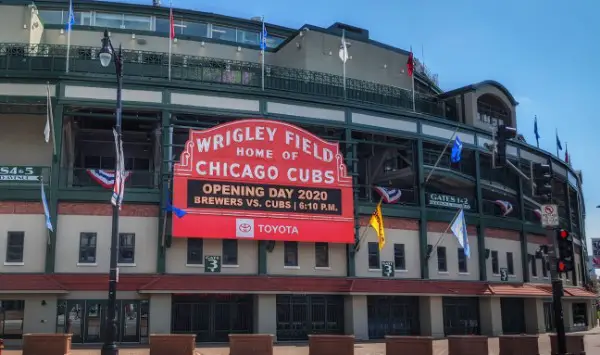
Length of Season, Expanded Playoffs Still Causing Conflict Between Players, Owners
Though things probably won’t get nearly as contentious as last year, when the league was forced to implement the rules for the season after players and owners failed to reach an agreement, the two sides are still at odds over a variety of matters. The most pressing of those is the start of spring training and the length of the season, since report dates are coming up in less than a month.
The Cactus League sent a letter to the commissioner Monday urging him to push back the start of spring training due to the exceedingly high COVID-19 numbers in Maricopa County, home to 10 MLB facilities. Those numbers are expected to peak in mid-February and then fall sharply over the next month, according to data from the University of Washington’s Institute for Health Metrics and Evaluation. A delay of just four weeks would not only allow for a safer environment, it’d give even more time for vaccinations to be administered.
As Ken Rosenthal pointed out in his piece for The Athletic, that means a greater chance to get more fans in the stands. It would also prevent or lessen the need to shut anything down and would create a more normal environment for players. If we’re being honest, though, the real key to all of this is money. Bigger crowds equal more gate and concession revenue.
That sounds like a winning proposition all the way around, but the players want assurances that they’ll be paid for a full season, either by adding time to the end if it’s delayed or simply paying full salaries even if it is shorted a bit. Owners object to the former because it would mean shuffling the postseason broadcast schedule so integral to their budgets, and the latter, well, that’s pretty much a non-starter.
The postseason itself is also the subject of conflict, with the league making multiple futile overtures to the players in an attempt to make the expanded format more permanent. They’d probably be looking at something more similar to the NFL’s 14-team tournament rather than the 16-team bracket from last season, but the point is that the owners benefit far more than the players from such a shift.
According to Rosenthal, MLB offered to guarantee players an $80 million playoff pool in addition to extending the universal DH and resolving two service-time grievances from last season in the union’s favor. The league also wanted to implement some tweaks to the rules, including a pitch clock and an automated strike zone during spring training.
The players felt they’d be conceding more than the owners and rejected the proposal, though there’s still time to get something worked out. There’d be even more time if the two sides agreed to push back the start of spring training, which would make everything safer as well. In the end, it all comes back to money.
The players want full pay and would support a delay if they’re still able to complete something close to 162 games. The owners want to preserve the sanctity of their television contracts, namely the multi-billion-dollar pacts with FOX and Turner for the playoffs. Even ESPN, which has been seeking to scale back its regular-season programming, has reportedly been working on a deal for the opening round of the playoffs.
Pushing the World Series into mid-November means competing more heavily with all the other major professional sports, not to mention college football. That’s costly to the league when it comes to interested eyeballs and the resultant advertising revenue they drive. Even with markets booming, baseball doesn’t want to have to compete as heavily for its share of that sweet, sweet cash from online gambling, hard seltzers, and erectile dysfunction treatments.
They’ll talk about safety and that’s absolutely what should be paramount here, but we all know what will drive these decisions at the end of the day. If nothing gets worked out, everything will continue as planned and we’ll just have to cross our fingers and hope for the best. Whatever happens, I just hope they’re able to play a full season that eventually sees fans returning to the stands at an increasing rate over the course of the spring, summer, and then fall.
